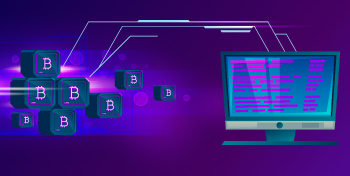When you start dealing with cryptocurrency, you will probably hear a lot about Bitcoin and Ethereum. Although Ethereum has not quite reached the popularity of Bitcoin, it is the cradle for many innovative and fast-growing concepts and features. One of the most popular of them is ERC – 20 tokens.
Everything You Need to Know about ERC-20 Tokens
You may have heard of ERC-20 tokens like Tether, Tron, VeChain and others. You can buy, sell and exchange them like any other cryptocurrency, but they are not exactly like other tokens. They have some features and benefits that you may not see in different currencies.
Ethereum
To understand ERC-20, you first need to understand Ethereum, the system it runs on. Ethereum is more than just a home for its own cryptocurrency, ETH. It’s a platform, a programming language, and a blockchain all in one.
Most importantly, it allows the use of smart contracts and decentralized applications (dApps). Smart contracts are automated agreements based on the rules and regulations of the blockchain code. They are applied automatically when users perform certain actions, which makes blockchain transactions a smoother and safer process.
With these code snippets simplifying things, developers can build dApps applications based on the Ethereum blockchain with minimal cost and time. Thanks to smart contracts and dApps, people can use Ethereum to create services based on blockchains, or even to create their own cryptocurrency.
No matter what they do with Ethereum, they need to create a token to do so. There may be some problems here. If everyone creates unique tokens with unique features, these tokens will not be scalable and will not be able to work together. To get around this problem, blockchain developers can base their tokens on an already existing standard. One of the earliest and most popular standards is ERC-20.
What is ERC-20?

ERC-20 appeared in late 2015, shortly after the creation of the Ether. This stands for Ethereum Request for Comments 20, as the 20th proposal for Ethereum features and innovations. While this is not the only Ethereum token standard, it is by far the most popular.
Many of the top 20 cryptocurrencies today are tokens of this standard. Since this standard appeared and quickly gained popularity, it makes sense that it is now used in many applications and currencies. If almost everyone uses the same standard, new applications that adopt it will be more convenient. Without standards such as ERC-20, companies would have to create their own block chains and smart contracts to produce block chain products. ERC-20 simplifies the process and gives new applications some necessary compatibility. Trading between different standard tokens is easy because they use the same set of rules and functions.
When you think of blockchain tokens, you probably think of cryptocurrency, but that’s not all they can be. ERC-20 can also serve as a model for blockchain-based lottery tickets, tracking services, or company shares. Regardless of what a token is, it needs a set of rules that define how it works, and that’s what ERC-20 is all about.
The rules and functions of the ERC-20
Tokens must comply with six mandatory rules and can accept three additional ones. These rules are a list of features that token creators must define in order for their tokens to work in the ERC-20 ecosystem.
First, let’s first look at the required ones.
The first rule, totalSupply, sets the total number of tokens created, since their number should be limited. Developers also need to define a transfer function that allows them to transfer tokens from the source to users.
On the other hand, there is a function – Balance Of, which returns tokens from one address to the source. Users should also be able to exchange tokens among themselves, which allows the – transferFrom function.
The last two mandatory rules help prevent fraud. The Approve function compares transactions with the general offer, and the Allow function cancels the transaction if the user does not have enough tokens.
Three optional rules:
- The name of the token
- Symbol
- Decimal number.
The first two allow developers to create a name and abbreviation to help identify the token, which is crucial for cryptocurrencies. The decimal number determines the minimum possible value of the token or how small a share users can buy and sell.
Advantages of ERC-20 tokens
Investing in cryptocurrency can be risky, as it is a relatively new concept and in most cases is not regulated. Just as a user needs to learn the details of traditional investments before the money goes to the investment section, they need to understand the cryptocurrency before buying it.
Since ERC-20 tokens adhere to a clear set of rules, the user can buy them with more confidence. If he already has some ERC-20 tokens, he can easily exchange them for others. Since they all run on the same smart contracts, issues such as unfair exchange rates, crashes, and hacking are not a problem. This compatibility also makes it easier to understand and use any blockchain services.
ERC-20 also makes life easier for blockchain software developers. Creating a new block chain can be challenging, and getting people to trust it is even harder. With this standard, they can use a system that already exists and that users are already familiar with. This gives them a significant head start. Since the standard simplifies the creation of new blockchain applications, it can promote innovations. Ease of use will attract more users and developers to the Ethereum platform, creating new and potentially revolutionary services.
Possible disadvantages of the standard
Like everything in the crypto sphere, ERC-20 is imperfect. The rules prevent a lot of abuse and potential problems, but there are some things they don’t stop. For example, in some situations, an error leads to the destruction of tokens when they are used as payment in a smart contract.
Another bug, called Batch Overflow, allowed hackers to exploit smart contract vulnerabilities, causing several exchanges to suspend deposits and withdrawals. The batchOverflow bug does not affect all ERC-20 applications, but those that implement the optional batchTransfer feature may be vulnerable.
Some people argue that creating new currencies and applications with ERC-20 is too easy. Ease of use can open the way for people to flood the market with unwanted tokens. As a result, it may be harder for users to find reliable and more valuable tokens and applications on Ethereum.
Finally, there are potential problems with the Ethereum ecosystem itself. Ethereum has a relatively low bandwidth, so periods of high demand can slow down some features. An app called CryptoKitties has been known to slow down the entire Ethereum block chain before it moved into its own block chain.
What’s next for the ERC-20?

Since the creation of ERC-20, several other standards have emerged for Ethereum. Some of them are designed to include different features, while others try to compensate for some ERC-20 vulnerabilities. However, none of them received the same distribution as ERC-20. It seems that this standard will remain the standard for Ethereum and dApps cryptocurrencies for the foreseeable future.
The same can be said about Ethereum itself, which has maintained its popularity despite the fact that many new platforms have tried to displace it. However, this does not mean that in the future ERC-20 will not change and develop even more. China is trying to launch a national cryptocurrency, and other countries may follow suit. ERC-20 can become the basis of a new national digital currency. At the very least, countries can turn to these standards as inspiration for developing a new cryptocurrency.
As new generations of investors lose faith in the traditional stock market, ERC-20 may provide an alternative. ERC-20 tokens can give users the right to vote in the future of their companies. To the extent that, as more and more companies and investors are beginning to use these tokens, it can change how companies manage the ownership of shares. Business as a whole can become more collective.
Ethereum and ERC-20 have Changed the World of cryptocurrencies
When Ethereum came out in 2015, it gave developers and blockchain enthusiasts a world of new opportunities. Five years later, ERC-20 tokens are still the driving force behind some of the most revolutionary innovations in cryptography.
Cryptocurrency and blockchain already have staggering potential, but ERC-20 has gone even further. ERC-20 tokens make cryptocurrency more accessible and secure for investors and developers.


